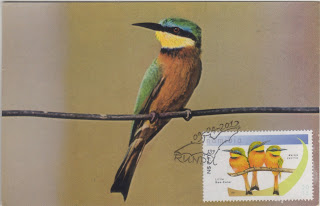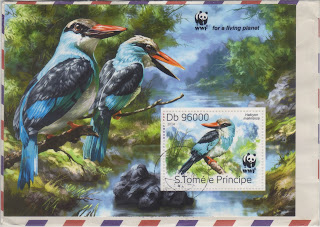First line :
Peregrine Falcon (擬游隼) ; Crested Serpent Eagle (大冠鷲)
White-backed Woodpecker (大赤啄木) ; Marsh Grassbird (斑背大尾鶯)
Second line :
Blakiston's Fish Owl (毛腳漁鴞) ; Cackling Goose (小加拿大雁)
Third line :
Okinawa Rail (沖繩秧雞) ; Japanese Wood Pigeon (黑林鴿)
Nordmann's Greenshank (諾氏青足鷸) ; Okinawa Woodpecker (野口啄木鳥)
Ireland (2014)
25th May, 2014. Ōhara, Iriomote
Peregrine Falcon (擬游隼) ; Crested Serpent Eagle (大冠鷲)
White-backed Woodpecker (大赤啄木) ; Marsh Grassbird (斑背大尾鶯)
Second line :
Blakiston's Fish Owl (毛腳漁鴞) ; Cackling Goose (小加拿大雁)
Third line :
Okinawa Rail (沖繩秧雞) ; Japanese Wood Pigeon (黑林鴿)
Nordmann's Greenshank (諾氏青足鷸) ; Okinawa Woodpecker (野口啄木鳥)
Ireland (2014)
25th May, 2014. Ōhara, Iriomote
Japan is located in the northwest Pacific Ocean. Being latitudinally long, the island chain covers a wide climatic range; from the boreal to the sub-tropical climate zone. There are also two ecological lines which divide the countries flora and fauna. These are Blakiston's Line (between Hokkaido and Honshu) and the Watase's Line (southern Japan). Because of this unusual ecological background, Japan's avifauna is incredibly rich. More than 600 species have been recorded to date. Most of them are migratory (more than 60%) whilst approximately 60 species are either endemic or sub-regional endemic, including the internationally famous Okinawa Rail, Blakiston's Fish-owl, Japanese Murrelet, Red-crowned Crane, Pryer's Woodpecker and Lidth's Jay.
Birding in Japan is increasingly popular. The largest nature conservation NGO, the Wild Bird Society of Japan, has more than 53,000 members and there are more birders who do not belong to the WBS-J. Twitching is becoming more and more common. People can get to rare birds within a few hours of their discovery because of the development of the internet and mobile telephones.






















































